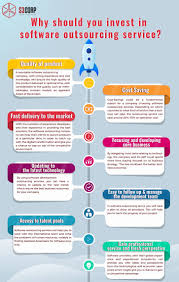The Importance of Business Optimization
In today’s competitive business landscape, organizations are constantly seeking ways to improve efficiency, reduce costs, and enhance overall performance. This is where the concept of business optimization comes into play.
Business optimization involves analyzing and refining processes, systems, and workflows to maximize productivity and achieve strategic goals. By identifying areas for improvement and implementing tailored solutions, businesses can streamline operations and drive sustainable growth.
Key Benefits of Business Optimization:
- Enhanced Efficiency: By eliminating bottlenecks and inefficiencies, businesses can operate more smoothly and effectively.
- Cost Reduction: Optimized processes often lead to reduced operational costs and increased profitability.
- Improved Quality: Streamlining workflows can result in higher quality products or services that meet or exceed customer expectations.
- Increased Agility: Optimized businesses are better equipped to respond quickly to market changes and adapt to new opportunities.
- Better Decision-Making: Data-driven optimization enables informed decision-making based on accurate insights and analytics.
How to Implement Business Optimization Strategies:
To successfully optimize a business, organizations should follow these key steps:
- Evaluate Current Processes: Conduct a thorough analysis of existing workflows to identify areas for improvement.
- Set Clear Objectives: Define specific goals and objectives that align with the organization’s overall strategy.
- Implement Solutions: Introduce changes, technologies, or methodologies that address identified inefficiencies and drive improvements.
- Monitor Progress: Regularly track performance metrics to assess the impact of optimization efforts and make adjustments as needed.
- Celebrate Successes: Recognize achievements and milestones reached through business optimization to motivate employees and sustain momentum.
In conclusion, business optimization is a crucial process for organizations looking to stay competitive in a rapidly evolving marketplace. By continuously refining operations, embracing innovation, and prioritizing efficiency, businesses can position themselves for long-term success and growth.
8 Essential Tips for Optimizing Your Business Operations
- Regularly review and update your business processes to improve efficiency.
- Utilize technology to automate repetitive tasks and streamline operations.
- Focus on providing excellent customer service to build loyalty and attract new customers.
- Invest in employee training and development to enhance skills and productivity.
- Monitor key performance indicators (KPIs) to track progress and identify areas for improvement.
- Establish strong partnerships with suppliers, vendors, and other businesses to optimize resources.
- Implement a cost-effective marketing strategy to reach your target audience effectively.
- Stay informed about industry trends and competitors to adapt your business strategies accordingly.
Regularly review and update your business processes to improve efficiency.
Regularly reviewing and updating your business processes is a key tip for optimizing your operations and enhancing efficiency. By conducting periodic assessments of your workflows, you can identify areas that may be causing bottlenecks or inefficiencies and implement targeted improvements. Embracing a culture of continuous improvement allows your business to adapt to changing market dynamics, technological advancements, and customer needs, ensuring that you remain agile and competitive in today’s fast-paced business environment.
Utilize technology to automate repetitive tasks and streamline operations.
To enhance business optimization, it is recommended to leverage technology to automate repetitive tasks and streamline operations. By implementing automation tools and systems, businesses can increase efficiency, reduce manual errors, and free up valuable time for employees to focus on more strategic activities. This approach not only improves productivity but also enhances overall workflow consistency and effectiveness, leading to a more agile and competitive organization.
Focus on providing excellent customer service to build loyalty and attract new customers.
Focusing on providing excellent customer service is a key strategy in business optimization. By prioritizing customer satisfaction, businesses can build loyalty among existing customers and create positive word-of-mouth referrals that attract new customers. Delivering exceptional service not only enhances the overall customer experience but also fosters long-term relationships that drive repeat business and contribute to sustainable growth. Investing in customer service training, implementing feedback mechanisms, and personalizing interactions can help businesses differentiate themselves in a competitive market and establish a reputation for quality and reliability.
Invest in employee training and development to enhance skills and productivity.
Investing in employee training and development is a key strategy for business optimization. By providing opportunities for skill enhancement and professional growth, organizations can empower their workforce to perform at their best and contribute effectively to the company’s success. Well-trained employees are more productive, engaged, and adaptable to changing business needs, ultimately leading to improved efficiency and performance across all levels of the organization. Prioritizing employee development not only benefits individuals but also strengthens the overall capabilities and competitiveness of the business in today’s dynamic market environment.
Monitor key performance indicators (KPIs) to track progress and identify areas for improvement.
Monitoring key performance indicators (KPIs) is essential for effective business optimization. By tracking specific metrics that align with strategic objectives, organizations can measure their progress, identify areas of strength, and pinpoint opportunities for enhancement. KPIs provide valuable insights into the health of various aspects of the business, enabling informed decision-making and targeted improvements. Regularly analyzing KPI data allows businesses to stay agile, adjust strategies as needed, and drive continuous optimization efforts to achieve sustainable growth and success.
Establish strong partnerships with suppliers, vendors, and other businesses to optimize resources.
Establishing strong partnerships with suppliers, vendors, and other businesses is a key tip for optimizing resources in business operations. By forming collaborative relationships with external partners, organizations can leverage shared expertise, access additional resources, and streamline supply chains. These partnerships foster mutual trust and communication, leading to enhanced efficiency, cost savings, and ultimately a competitive advantage in the market. Effective collaboration with external stakeholders enables businesses to maximize the use of available resources and drive sustainable growth through strategic alliances.
Implement a cost-effective marketing strategy to reach your target audience effectively.
Implementing a cost-effective marketing strategy is a key tip for business optimization. By carefully planning and executing marketing initiatives that are both efficient and targeted, businesses can effectively reach their desired audience without overspending on unnecessary expenses. This approach allows companies to maximize their marketing budget, generate higher ROI, and establish stronger connections with potential customers, ultimately leading to increased brand visibility and sustainable growth in the competitive market landscape.
Stay informed about industry trends and competitors to adapt your business strategies accordingly.
Staying informed about industry trends and keeping a close eye on competitors is a vital aspect of business optimization. By staying attuned to the latest developments in the industry and understanding how competitors are positioning themselves, businesses can adapt their strategies proactively. This knowledge allows businesses to make informed decisions, identify potential opportunities for growth, and stay ahead of the curve in an ever-changing business landscape. Adapting business strategies based on industry trends and competitor insights is key to optimizing performance and maintaining a competitive edge.



